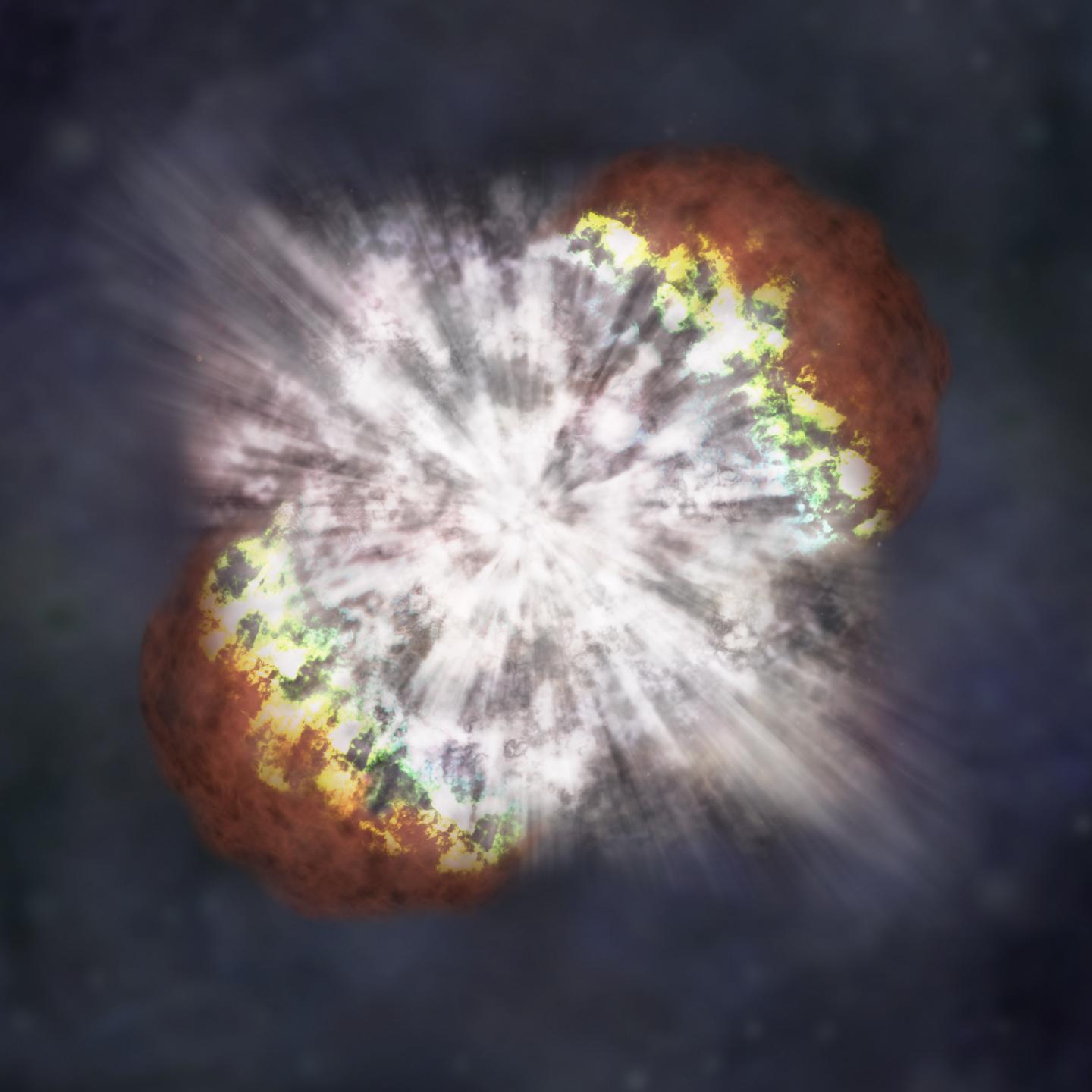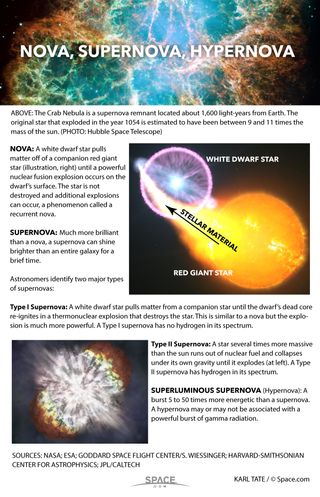Mysterious Supernovas Explode Twice, Giving Birth to Powerful Magnets

A mysterious kind of supernova that appears to explode twice may be giving birth to some of the most powerful magnets in the universe, a new study finds.
Supernovas are explosions that occur when certain types of stars run out of fuel and "die." These outbursts can briefly outshine all of the millions of other stars in their galaxies.
Recently, scientists detected a very rare class of supernova, known as superluminous supernovas. These star explosions are up to 100 times brighter than other supernovas. The superluminous variety account for less than a thousandth of all supernovas, and only about 30 examples have been studied well. [Supernova Photos: Great Images of Star Explosions]
"They are extremely bright and can be seen for up to a year but are incredibly rare, so [they] are difficult to find and measure," said study lead author Mathew Smith, an astrophysicist at the University of Southampton in England. "We don't yet know the physical origin of these cosmic explosions that can be seen out to the beginning of the universe; that's the main focus of current and future searches."
Mysteriously, previous research suggested that some superluminous supernovas appear to explode twice. Before their main explosions, each of these supernovas experience a spike in brightness that lasts a few days.
Now, Smith and his colleagues have analyzed such a "double-peaked" superluminous supernova from almost the moment it occurred, shedding light on its origins. In their new paper, they said most superluminous supernovas may actually be double-peaked.


The researchers discovered this superluminous supernova, named DES14X3taz, in 2014 by examining data from the Dark Energy Survey. DES14X3taz is located about 6.4 billion light-years from Earth.
Get the Space.com Newsletter
Breaking space news, the latest updates on rocket launches, skywatching events and more!
Using the Gran Telescopio Canarias, a telescope in Spain's Canary Islands, the team of astronomers carried out follow-up observations shortly after DES14X3taz was first detected. This helped the researchers to see how the supernova's temperature evolved over time.
The researchers saw that after the initial spike of brightness, the object rapidly cooled off. Another, more powerful burst of brightness followed.
The initial spike of brightness likely coincided with the dying star's ejection of a huge bubble of material into outer space. The star's mass was about 200 times that of the sun, and the mass of the bubble of expelled material was about equivalent to the sun's, the researchers estimated. This bubble of expelled material cooled rapidly as it grew, they said.
Following the initial spike in brightness, this supernova gave birth to a magnetar, the researchers said. Magnetars are among the most powerful magnets in the universe. They are a kind of neutron star, which is the leftover core of material in a dead massive star. To reach this conclusion about the magnetar birth, the researchers compared the data with several physical models of supernovas.
The explosion created by the magnetar's formation heated up the bubble expelled by the first explosion, leading to the second, more powerful burst of brightness, the researchers found.
However, the researchers said that their most surprising discovery was "not that the supernova had a double peak, but that there's significant evidence that most superluminous supernovae do, too," Smith told Space.com.
Previous research of past superluminous supernovas suggested "these astrophysical objects are all highly similar, and thus presumably, one explosion mechanism can explain them all," Smith said.
The research team's analysis of other superluminous supernovas does indeed suggest that double peaks "may be intrinsic to all superluminous supernovae," Smith said.
"The hunt is now on to find these events early and really tie down what causes them," Smith said. "Fingers crossed we find some more."
The scientists detailed their findings online July 26 in The Astrophysical Journal Letters.
Follow Charles Q. Choi on Twitter @cqchoi. Follow us @Spacedotcom, Facebook and Google+. Original story on Space.com.
Join our Space Forums to keep talking space on the latest missions, night sky and more! And if you have a news tip, correction or comment, let us know at: community@space.com.

Charles Q. Choi is a contributing writer for Space.com and Live Science. He covers all things human origins and astronomy as well as physics, animals and general science topics. Charles has a Master of Arts degree from the University of Missouri-Columbia, School of Journalism and a Bachelor of Arts degree from the University of South Florida. Charles has visited every continent on Earth, drinking rancid yak butter tea in Lhasa, snorkeling with sea lions in the Galapagos and even climbing an iceberg in Antarctica. Visit him at http://www.sciwriter.us
Most Popular
